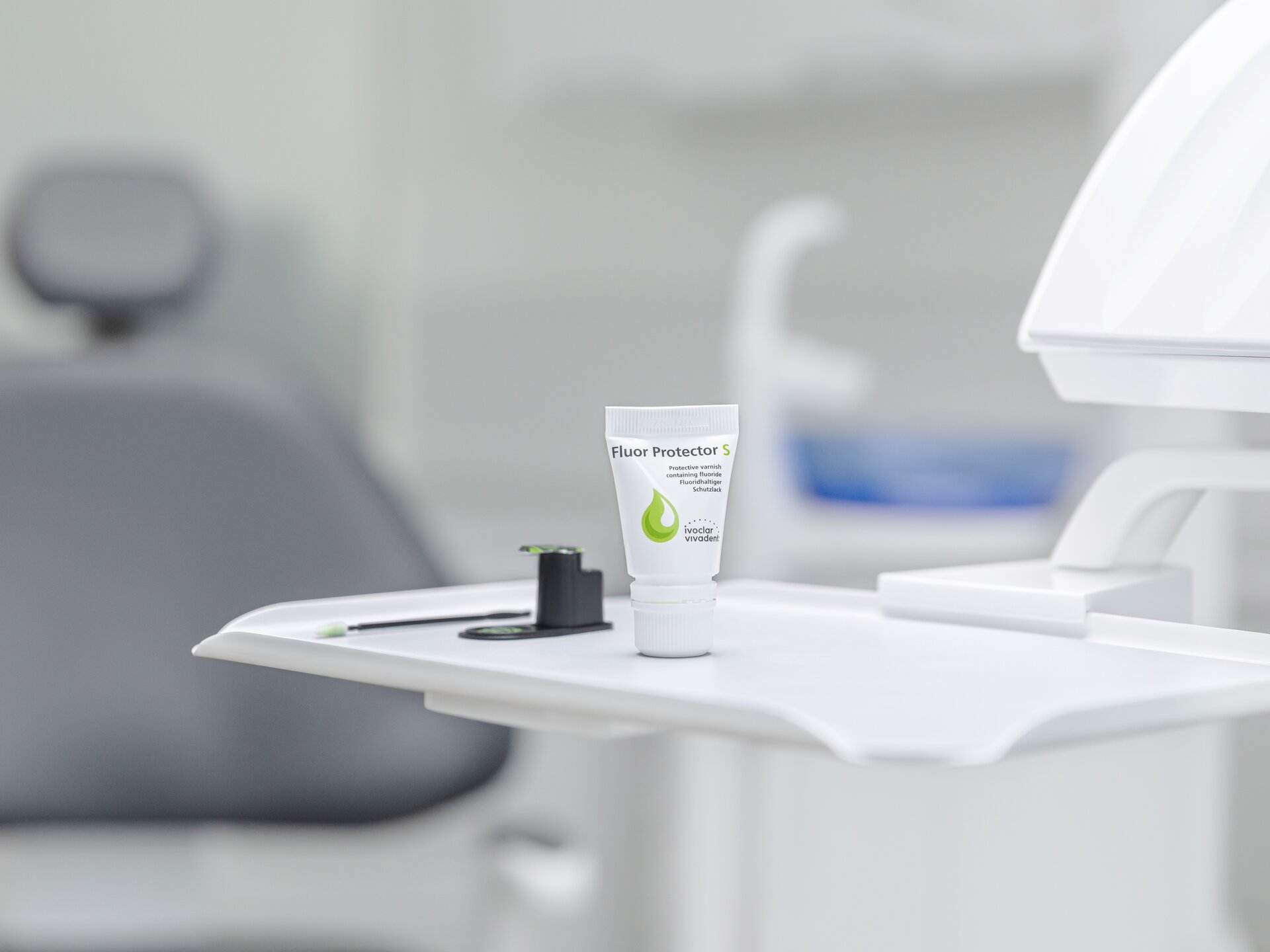Why you should choose Fluor Protector S
By using Fluor Protector S, you build up a fluoride depot on the teeth, which is why you offer your patients the ideal long-term protection against tooth decay and erosion. Although Fluor Protector S contains less fluoride, it deposits more fluoride on and in the enamel after one hour than commonly used 5 percent sodium fluoride varnishes [17].
The fluoride source ammonium fluoride is provided with solvent. After evaporation of the solvent, which accounts for about 73 percent, the fluoride concentration is up to four times higher. The fluoride content is 0.77 percent or 7700 particles per million (ppm) of fluoride in homogeneous solution. After drying, the concentration is about 29,000 ppm fluoride.
The excellent flow and wetting properties of the low-viscosity Fluor Protector S paint promote the supply of hard-to-reach areas. In contrast to viscous products, the coating system can be distributed quickly and easily and penetrates complex surface profiles. Risk zones on retaining teeth for removable dentures, exposed tooth necks and root surfaces, fissures, proximal surfaces, etc. thus receive the desired protection.
In contrast to gels or foams, Fluor Protector S can be applied to fluoride varnish specifically on the spot and adheres to the teeth after drying. Smaller amounts are used, which also adhere better to the tooth surface than gels. Thus, excessive ingestion can be prevented [7] and an overdose can be avoided. For children who are not yet able to control the swallowing reflex, the application of varnish is therefore expressly recommended.
We are pleased to offer you the whitepaper and a free test sample.
Please fill out the contact form.
[7] O’Mullane DM, Baez RJ, Jones S, Lennon MA, Petersen PE, Rugg-Gunn AJ, et al. Fluoride and Oral Health. Community. Dent. Health. 2016;33:69–99.
[17] Bolis, Carlo, Härtli, Gian Peider, Lendenmann, Urs. Fluoride Varnishes – Is There a Correlation Between Fluoride Release and Deposition on Enamel? Oral Health Prev Dent 2015;13:545–56.
